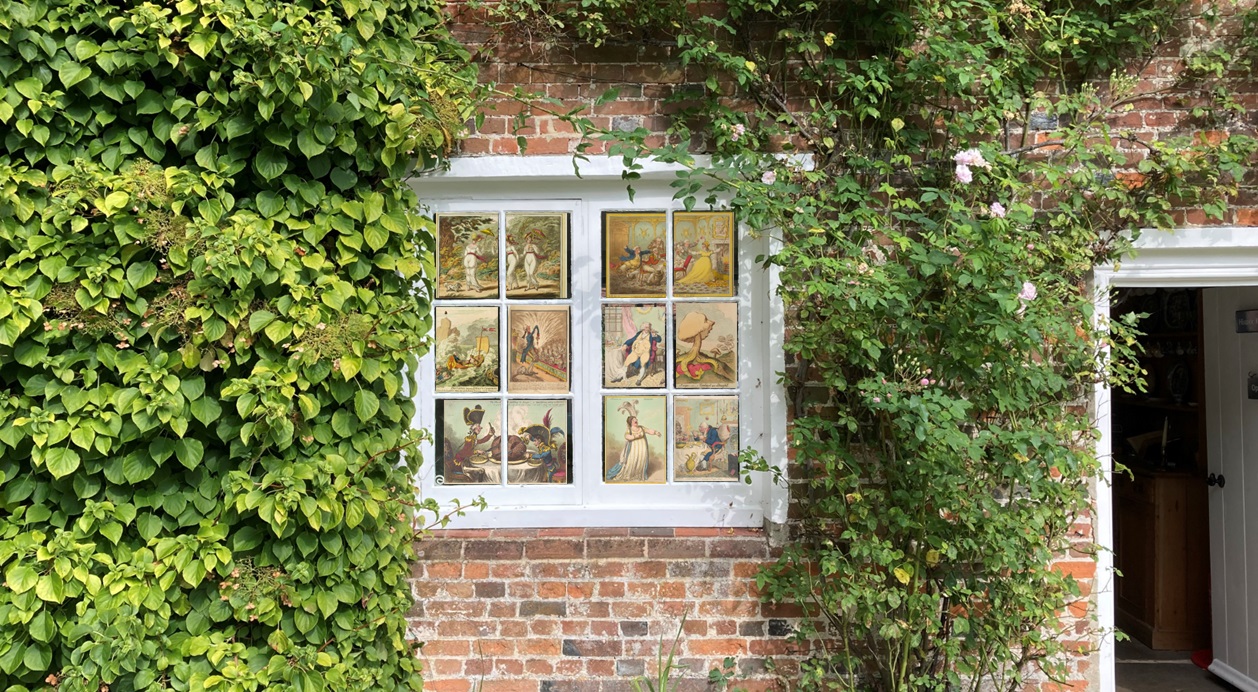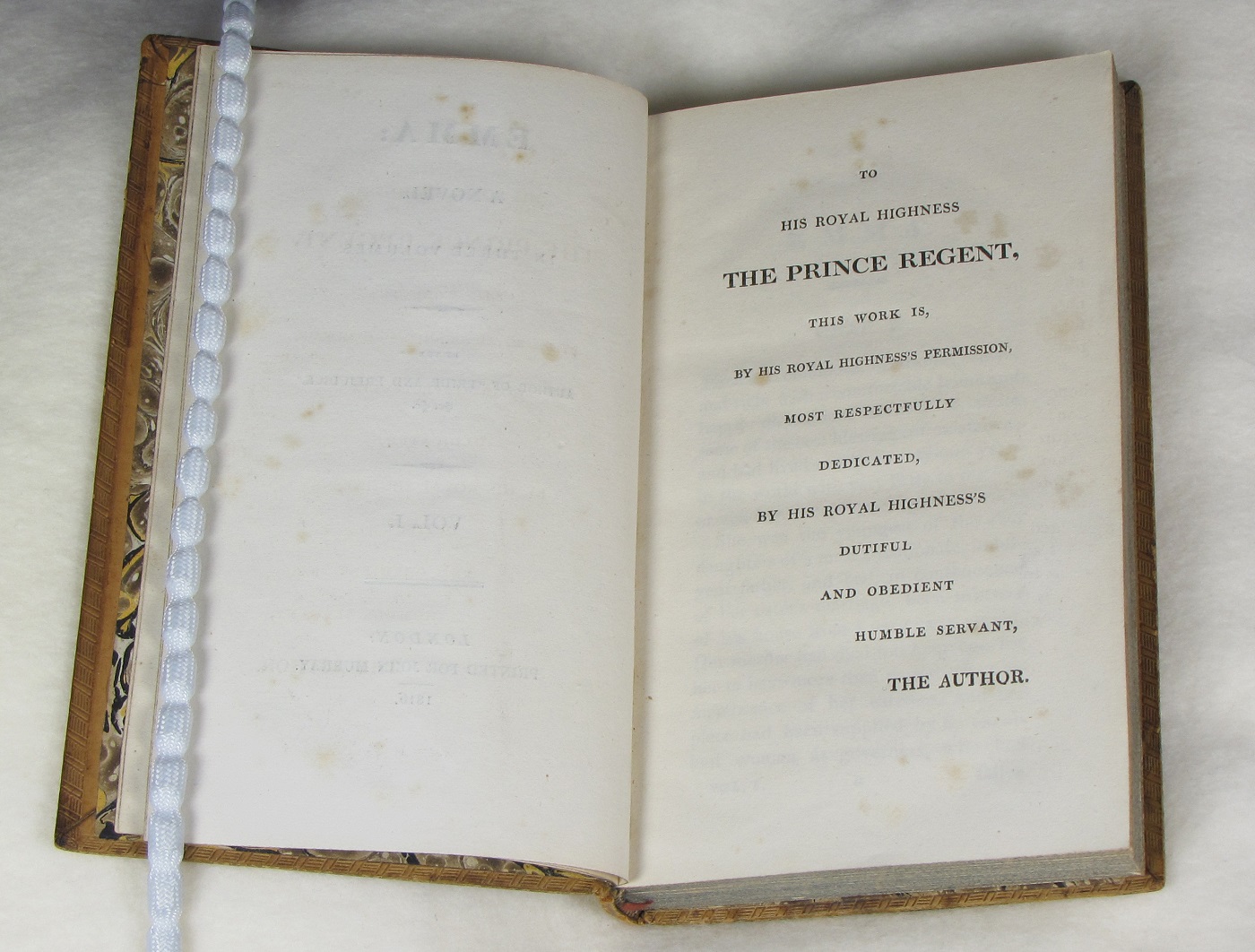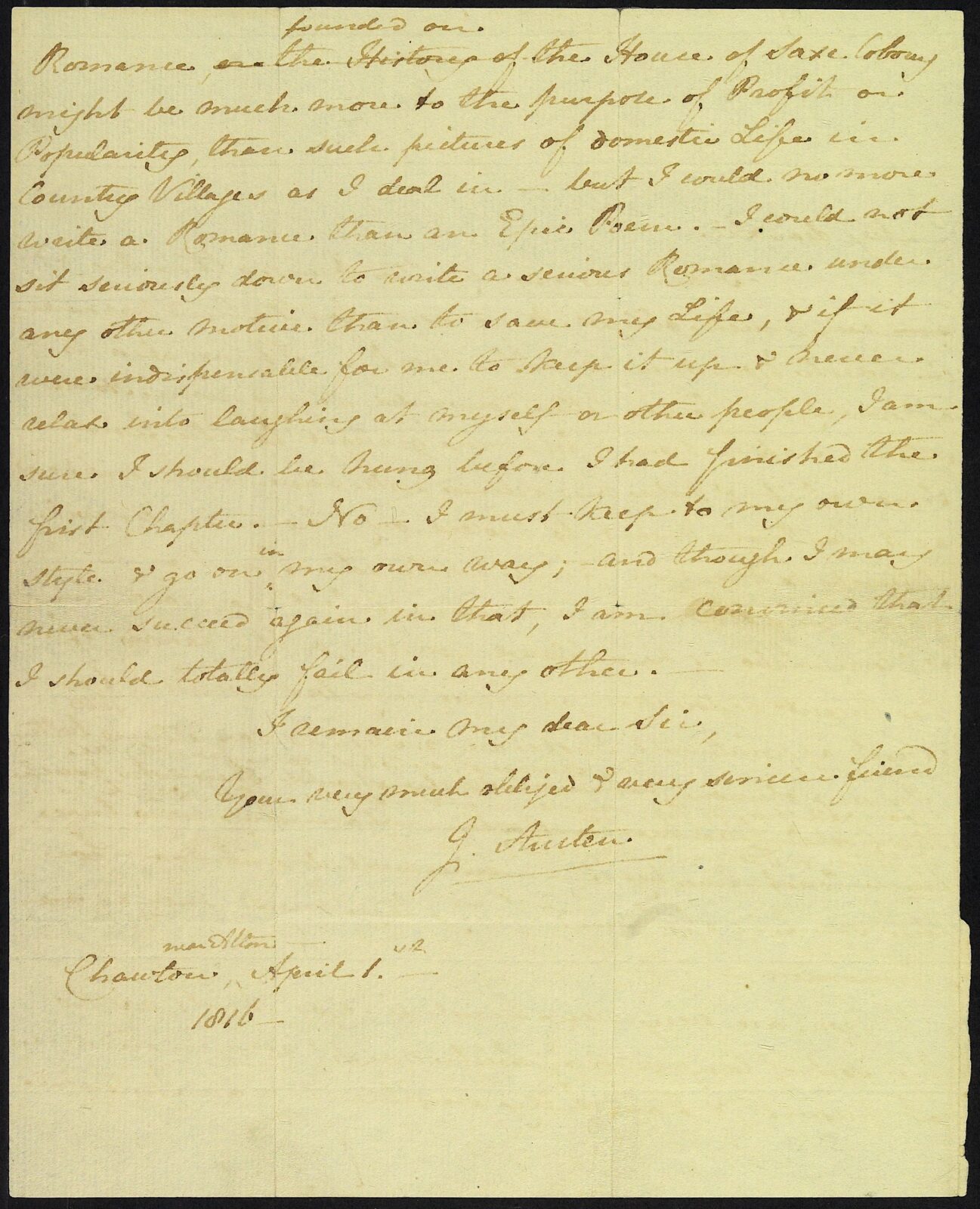Room 5: Jane Austen and the ‘P.R.’
Whilst Gillray and his fellow printmakers were satirising the Royal family – in particular the extravagant, lascivious Prince Regent – Jane Austen was doing her best to avoid them. She loathed the Prince – writing in 1813 of his wife, Princess Caroline: ‘Poor woman, I shall support her as long as I can, because she is a Woman, & because I hate her husband’.
But in 1815 a chance encounter between Jane’s brother Henry and the Prince’s doctor brought them together. On learning that the Prince was an avid reader of Jane’s novels, Henry could not resist revealing his sister Jane’s identity; this led to an invitation for her to visit the Prince’s grand library at Carlton House. George, it would seem, was not only interested in food and drink, as he is in Gillray’s cartoon; he also spent lavishly on books.
Although she did not meet the Prince in person, Jane did meet and engage in an unlikely correspondence with his librarian, Reverend James Stanier Clarke. He flattered her, made suggestions for her next works, and invited her to dedicate her next novel to the Prince. Whilst Jane did not wish to do so, she had little choice, and Emma was published in 1816 with a rather grudging dedication.
Emma first edition, 1816
Emma, Jane Austen’s fourth published novel, was issued in December 1815 although it bears ‘1816’ on the title page. It contained the following dedication to the Prince Regent:
‘To His Royal Highness, The Prince Regent. This work is, by his Royal Highness’s permission, most respectfully dedicated by His Royal Highness’s dutiful and obedient humble servant, The Author.’
Jane did not like or approve of the Prince (or the ‘P.R.’ as she charmingly dubs him in her letters), who was famously debauched and profligate. So whilst she was forced to comply with his royal request, her abrupt dedication may be read as satirical and pointed.
Letter from Jane Austen to James Stanier Clarke, 1 April 1816
Jane’s correspondence with Stanier Clarke began in 1815 and continued into the spring of 1816, when this letter (her own copy of the one that she sent) was written. In it, Jane responds to Stanier Clarke’s suggestion that for her next work she might attempt a ‘Historical Romance illustrative of the History of the august house of Cobourg’.
She tactfully declines the idea, writing that although such a work might be more profitable or popular than her ‘pictures of domestic Life in Country Villages’, she ‘could no more write a Romance than an Epic Poem’.
That’s it! You’ve reached the end of this virtual exhibition.




